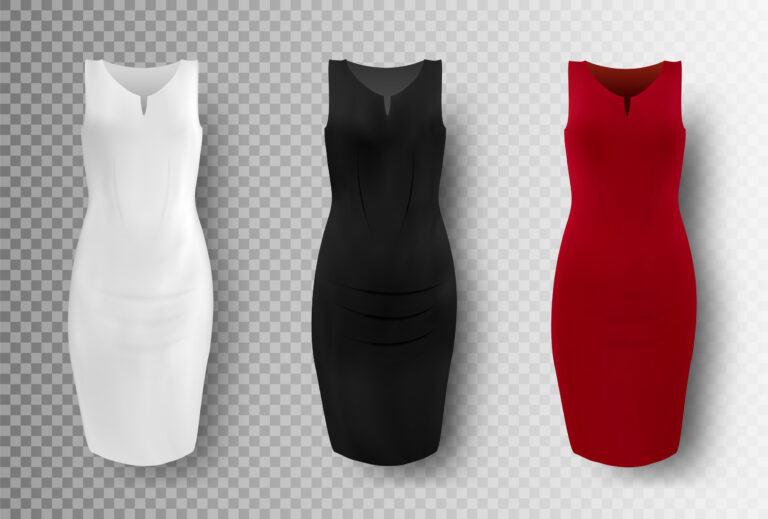
Source: news.google.com
Web3 is transforming the $2.4 trillion fashion industry worldwide. Digital fashion is clothing made of pixels, not cloth; they may not exist in the real world. Fashion design software like CLO 3D and others has been around for years, but new Web3 tools are helping to create a new asset class of digital items. Digital clothing can be technologically tailored to fit an image or avatar of yourself for sharing on social media, metaverse, game skins, or digital presence programs like Zoom, Teams, etc., using augmented reality filters ( RA). Digital fashion is an emerging trend in the world and has become a major cultural influence.
Examples of Digital Fashion
A new trend has started with several notable examples and pivotal moments.
Key factors
Digital fashion has multiple drivers and changes that allow for cultural proliferation.
Technological changes
One of the biggest trends in digital fashion is the use of augmented reality (AR) and virtual reality (VR) technology. AR allows users to see how a garment or accessory will fit before making a purchase, while VR allows users to experience fashion shows and events in a fully immersive environment. Web3, also known as the decentralized web, is a movement towards a more open and decentralized Internet. Web3 technologies are being used to create more transparent, sustainable and inclusive fashion ecosystems. Web3 has created several decentralized marketplaces, allowing peer-to-peer transactions to trade and exchange digital assets like NFTs (non-fungible tokens).
This can allow for the creation of new, more inclusive fashion ecosystems that are not controlled by a single entity. These technologies are mutually exclusive, for example items can be purchased on the blockchain that AR accesses and used in the metaverse.
Personalization
The creator economy of Web3 has given rise to custom and made-to-order clothing. Using advanced algorithms and data analysis, creators can now create unique garments tailored to an individual’s personal style and preferences.
Sustainability
As the world’s second largest polluter, the fashion industry is constantly looking for sustainable solutions, and digital fashion is a valuable lever. Web3, powered by other technologies, can offer eco-friendly materials and sustainable production processes. Consumers can make responsible fashion choices while experiencing clothing made from impractical materials like wood, liquid, glass, etc.
Marketing
The use of social media and influencer marketing is also changing the way fashion is marketed and sold. Influencers have become powerful trendsetters in the industry with their endorsements and recommendations driving consumer purchasing decisions and lowering cost of sales. Digital fashion can also improve inventory management and operational efficiency for marketing-led brands.
Digital Fashion Use Cases
Digital fashion has a multitude of current and emerging use cases today. Many fashion brands like Nike, Adidas, D&G, and Gucci have made significant strides in this space.
digital twin
Some traditional fashion brands use digital twins to design and develop new products using the software. They can also simulate the strength and performance of clothing and accessories in various environments and optimize items to meet consumer needs. They also offer virtual try-ons and other interactive experiences, allowing customers to see what it would look like on them.
metaverse identity
Clothing can reflect an individual’s personality in real life, and digital fashion will do so in the virtual world as avatars become active in the metaverse. NFT versions of digital clothing can also serve as people’s metaverse identities. It’s also fun to play dress up your avatars in a custom look in digital spaces.
collectibles
Digital fashion can also be a limited edition collectible. For example, during a brand activation, a digital Gucci bag sold for more than its physical counterpart in the Roblox online game. Gucci created a hi-fi environment within Roblox, inviting players to explore themed rooms for 14 days and purchase the digital asset. A digital version of Gucci’s diagnostic bag sold for 350,000 Robux, which equates to roughly $4,115 on Club Penguin, a Roblox-adjacent gaming site; actual versions of the bag typically retail for around $3,400.
non-expendable tokens
Italian luxury brand Dolce and Gabbana has auctioned off its digital collection for $6 million, signaling the value of designer clothing in the metaverse. These non-fungible tokens (NFTs) have the utility of providing access to D&G couture shows, acting as a ticket to the decentralized community like Bored Ape and Yacht Club.
The future of digital fashion
Like the beauty industry, digital fashion is rapidly integrating into e-commerce, allowing users to try in real time before they buy using smart glasses, VR headsets, and even mobile phones.
Phygital clothing (both digital and physical) can be activated using AR, QR codes, etc., to order the same digital garment in real life as well. This allows fashion brands to try on items digitally before physically producing them.
Gen Z and Gen Alpha have purchased digital suits and skins with their money both in and out of the games. Many are already layering accessories like hats, sunglasses, and earrings on social media and in Zoom meetings. The market is expected to grow and scale as digital fashion matures.
Read More at news.google.com